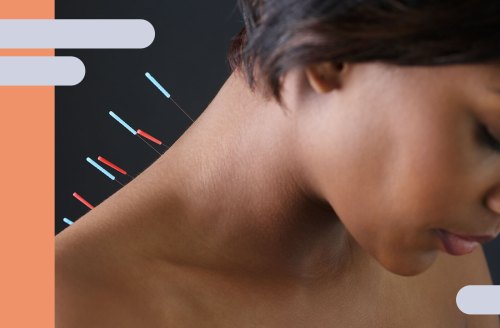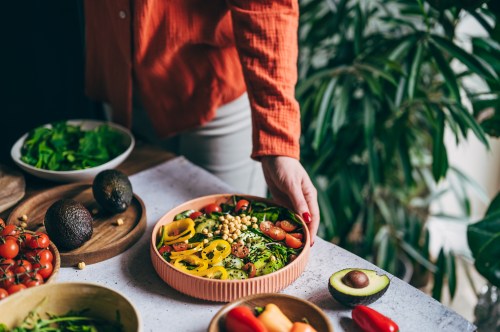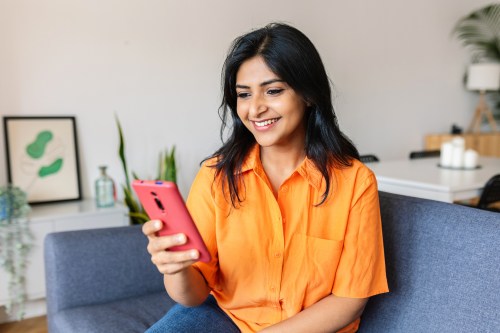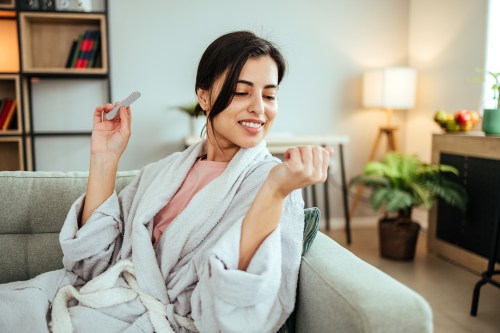Meet the Group Dedicated to Rooting Out Racism and Whitewashing in Acupuncture
Meet Tansim Lee, DAOM, LAc, the founder and CEO of Influential Point, a group whose mission is to make acupuncture more equitable and inclusive in the U.S.

In the United States, acupuncture has long been a mainstay of holistic treatment to treat health conditions, from pain to infertility, as well as to promote general well-being. Most of the evidence around acupuncture’s effectiveness lies in pain management, though more researchers are branching out to explore its role beyond this.
Experts in This Article
Tamsin Lee, DA[o]M, AEMP, is a doctor of East Asian medicine, acupuncturist, and a NCCIH funded postdoctoral senior clinical researcher at the University of Washington. She is also the founder of Influential Point, a collective of acupuncturists committed to advancing diversity, equity, and inclusion in global healthcare.
Yet despite centuries’ worth of precedent and a body of evidence supporting its efficacy, acupuncture in the U.S. today is a largely white speciality. The most dedicated user of acupuncture in the U.S. continues to be white women in their 40s to 60s. And acupuncturists are mostly white (50.1 percent), double the number of Asian practitioners (who make up 23.8 percent). Despite having roots in Chinese, Japanese, and Korean healing practices, acupuncture—like many other wellness practices—has been colonized by white patients and practitioners.
Enter Influential Point, a new educational community promoting health diversity, equity, and inclusion within the East Asian medicine field. (Its name is a reference to the eight “influential points” of the body where various organs, systems, and energy points intersect; these eight points are commonly used as starting points in acupuncture to treat a wide variety of conditions.) The grassroots industry group has an ambitious agenda about how to better advance the field of acupuncture to make it more equitable and inclusive, spearheaded by its founder and CEO, Tamsin Lee, DAOM, LAc. (In addition to being an acupuncturist, Dr. Lee is the only researcher with an acupuncture background in a postdoctoral fellowship funded by the National Center for Complementary and Integrative Health, National Institute of Health.)
Influential Point didn’t initially start as an explicitly DEI-focused organization (Diversity, Equity and Inclusion); rather, its initial launch in May positioned the group as an educational resource for acupuncturists. But on the last week of recruitment for a survey exploring how practitioners were adapting to COVID-19, George Floyd’s murder at the hands of police rocked the nation and spurred weeks of protests surrounding racial justice that Dr. Lee says made the survey feel less relevant.
“We had to decide how we were going to proceed,” Dr. Lee says. “So I told the team I’d like to use Influential Point as a way to educate about social justice within East Asian Medicine, because traditional medicines come from a culture, but currently it predominantly serves the white, female, highly educated and upper socioeconomic demographic.” The group pivoted quickly, announcing its new focus on June 3 and sharing a wealth of information about anti-racism, health equity and disparities, and more on its feeds.
“Influential Point has grown to be this educational community platform where we support BIPOC students and practitioners, conduct research, and teach through the use of digital media,” Dr. Lee says. “Our current focus is on the acupuncture profession but we hope to expand to all traditional medicines.”
Well+Good recently spoke to Dr. Lee about Influential Point’s mission, the problem with whitewashing and racism within acupuncture and other East Asian health practices, and where the industry should go to better serve more people.
Well+Good: Could you tell us more about Influential Point’s role in the acupuncture community?
Dr. Tamsin Lee: Influential Point exists to educate, support, and empower acupuncturists to be DEI practitioners who push for systemic changes, and I’m hoping that by empowering them, we make acupuncture more accessible to all communities.
We give BIPOC acupuncturists a platform to collaborate on Instagram and Facebook, because for too long BIPOC students and practitioners haven’t had a platform to talk about or teach the things they want to share. I hope they’ll be seen, so that they’ll have confidence to support their community and also take on leadership roles. To support this, we provide education and also work with BIPOC acupuncture community leaders to conduct research that will serve them in their practice.
Influential Point also focuses on acknowledging the indigenous roots of the medicine that comes from China and other Asian countries, and championing cultural diversity and sensitivity among East Asian medicine practitioners.
Why do you think that the majority of acupuncture users in the U.S. today are white, upper-class women?
TL: We first need to look back at the history of American acupuncture. Chinese immigrants brought it to the U.S. in the 1800s. In the 1960s, when the Immigration Act was enacted [removing previous quotas on immigrants from Asian and Arab countries], acupuncturists from Vietnam, Japan, Korea, and China moved to the U.S.. And the Black and Brown community started to hear about acupuncture.
Around the ‘70s, heroin use was killing people in Black and Brown communities and the government wasn’t helping them. So the Black Panthers and Young Lords in New York City took over Lincoln hospital in the Bronx, bringing in their community members that were detoxing or had substance abuse. The leaders of these two organizations had studied with Chinese and Vietnamese practitioners in Canada and China and brought acupuncture back into their community. They started doing something called NADA, which is a type of detox protocol using auricular acupuncture [associated with benefits for addiction recovery].
But at the same time, four or five white men from UCLA were also interested in acupuncture. They had the means to create schools, regulations, and licensing. Asian acupuncturists were being arrested because they weren’t so-called “licensed.” These guys from UCLA had professionalized this medicine, but as they were professionalizing it, it became elitist. Asian immigrants who weren’t able to speak or study in English weren’t licensed. The Black and Puerto Rican community were unable to pay for these types of schools and licensing. So they couldn’t practice the medicine. More white folks were practicing it because they could afford it and spoke English. Generations of people that come from the same community were sharing it with the same community without offering it to other communities. I think that’s embedded in our education and medical training.
The presidents of schools, our accreditation board, and national organizations are predominantly white, and if there are Asians, many were born and raised in Asia. [These leaders] are out of touch with what students are demanding. They might say that [the field is] diverse because there are a few Asians, maybe one Black acupuncturist…but this doesn’t mean it’s inclusive. Many don’t know what intersectionality or BIPOC means. If our leaders don’t understand these terms, how could they possibly help us evolve?
Acupuncturists do not receive much or, a lot of the time, any cultural empowerment training in medical school, even in East Asian Medicine classes. For example, we aren’t trained to know what malar flush [a face rash symptomatic of certain health conditions like rosacea] looks like on darker complexions. If you don’t receive that in the medical school, when you’re in the clinic on your own, how could you possibly be serving different communities?
Why is it important for acupuncture to be accessible to all communities, not just the white, upper-class community?
TL: In Chinese medicine, we take a whole person approach. Not only are we looking at where they are in the moment, but also their health history, their family history and how that’s affecting the entire body.
A lot of communities of color encounter barriers to health-care access, so something like [acupuncture] could be a complementary approach. Acupuncture is not that expensive [compared to “conventional” medicine] and is something you can do anywhere, in the park, church basement, barber shop, and there’s a lot of research being done on the effects of acupuncture in the emergency department. It is meant to be accessible for anyone who needs it.
Forgive me for being blunt, but it’s interesting that acupuncturists do not target the East Asian community more in their marketing, given the origins of the practice. What is your take on this?
TL: From my experience, a lot of East Asians are kind of turned off by acupuncture and herbs. They see it as this old way of healing. I think a lot of that has to do with white supremacy changing the way we think about things from our ancestral country. A lot of us had to learn to “be white” to be accepted.
“Culture is meant to be shared… But when you use power and privilege and commodify a culture, then it becomes something a little darker.” —Dr. Lee
What is like as a person of East Asian heritage stepping into the world of East Asian medicine in the United States?
TL: I was resistant about entering this field because the word “oriental” was still used in degree titles, schools, and the licensing board, even though it has xenophobic and violent connotations in Asian American history. In clinics, it’s strange to see how acupuncture is presented, as very “Asian” but in an “exotic,” over-the-top way, using dragons and red and gongs.
In school, some white professors would question your experience. For example, we’d comment on how what is being taught differs from medicinal food practices in our family and they would say no, that’s wrong. Because of professionalism and because we have to pass these medical boards, we’re taught a very single-minded type of medicine. But traditionally, each family has its own way of practicing medicine.
Let’s talk more about cultural misappropriation in the world of East Asian medicine.
TL: Culture is meant to be shared. That’s how culture survives, right? It’s probably the reason why Chinese medicine has survived because it’s been shared. And I think that’s fine. But when you use power and privilege and commodify a culture, then it becomes something a little darker.
The intent of how you share this medicine is really important. Are you purposely sharing this so that only certain people can have access to it? Are you taking this medicine and claiming it as your own? It is also important to acknowledge the history behind the practices, acknowledge what it was historically used for and what it represented to the people using it.
For a new acupuncturist who is not of East Asian heritage, how would you talk them through practicing in a culturally respectful way?
TL: You have to know the history of the country, like China or Korea, and understand Asian-American and American acupuncture history.
Check in with your own biases about the culture. I’ve been in classes where white acupuncture students bully Chinese professors for their accents or complain that they can’t take this class because it’s really hard for them to understand the professor. You can’t practice acupuncture and be racist to Chinese communities.
Asian-Americans are facing increased violence and discrimination since COVID-19 started. As practitioners of East Asian medicine, we should be going into Chinatown, Japantown, Koreatown, and supporting the small businesses and people there. You need to be willing to go as far as being your own community’s leader and reaching out to the Asian-Americans within your own community.
What are the most pressing initiatives you’re working on right now at Influential Point?
TL: We currently have a petition calling for the word “oriental” to be removed from the professional field. [Editor’s note: The California State Oriental Medical Association (CSOMA), a large industry group, announced that it would drop the word from its name.] We also started The Meeting Point, which are virtual webinars, classes and workshops. The first series is called “Real Space”. This is a brave space check-in with our community members. We just had our first Real AA + NHPI (Asian American, Native Hawaiian and Pacific Islander) Space and it was incredible. Just to connect, share stories and be seen. We have Real Black, Latinx + Indigenous, Ally, Student and LGBTQ Spaces lined up [in August] and we hope to extend this to our international community. We also work with companies and brands as DEI consultants to help them incorporate Chinese medicine in a way that honors the integrity and the roots of the medicine.
This interview was edited and condensed for clarity.
Sign Up for Our Daily Newsletter
Get all the latest in wellness, trends, food, fitness, beauty, and more delivered right to your inbox.
Got it, you've been added to our email list.










